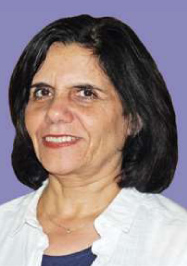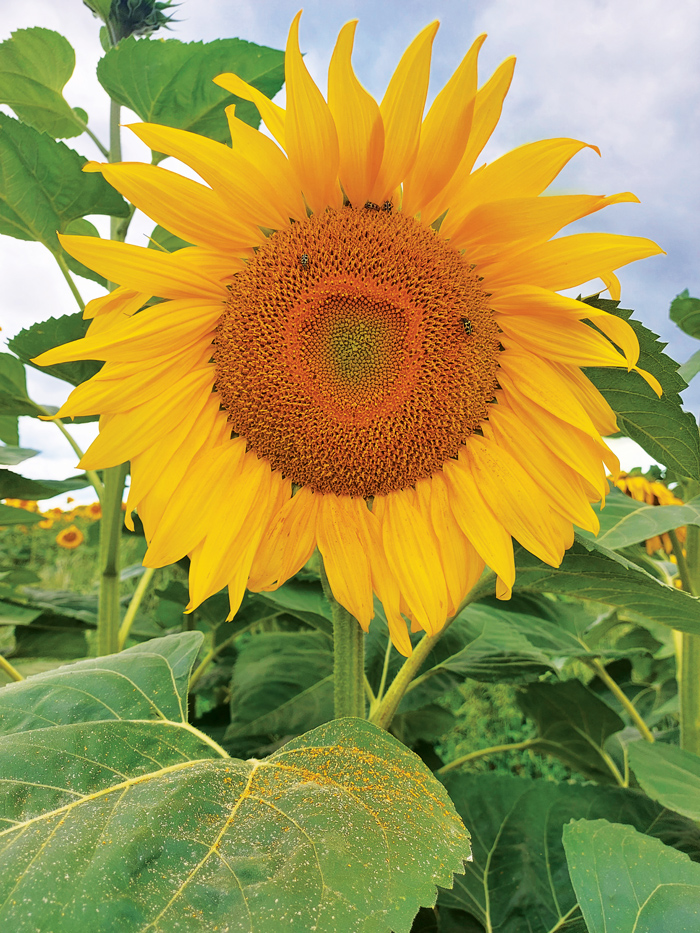October 2022
| DR SAFIAH MA’ALI, SENIOR RESEARCHER: ARC-GRAIN CROPS, POTCHEFSTROOM SPECIALIST AND EDUCATOR |
 |
Sunflower is a crop that, relative to other crops, performs well under drought conditions. This is probably why it is popular in the marginal cropping areas of South Africa. The crop is drought tolerant and has relatively low input costs.
Due to the short active growing period of sunflower, it has a planting window of three months, and it is also well suited in flexible crop rotation systems. In fact, it should only be planted in a crop rotation system – especially in the dry summer production areas.
Sunflower (Helianthus annuus L.) is an annual oilseed crop that is globally cultivated on a production area of approximately 26 million hectares, which results in ± 47,4 million metric tons of seed annually – an 8% share of the world oilseeds market. Sunflower oil is one of the world’s major vegetable oils, often used in the food industry by the production of various related commercial products due to its high quality, high protein content and edibility.
The average area under sunflower cultivation in South Africa since 2009 (until 2021) is 552 000 hectares, with an average production of 715 000 tons over this period. The South African sunflower production area remains concentrated in the Free State and North West provinces, which together account for 80% of the national area planted (on average) over the past ten years.
The ability of sunflowers to produce relatively consistent yields under adverse weather conditions, along with their overall characteristics of drought tolerance, make this crop an attractive option for farmers in dryland production regions. Sunflowers can also produce a crop on marginal soils and with very little or no additional fertiliser.
SOIL REQUIREMENTS
Sunflower is relatively well adapted to a wide range of soil texture classes and can be produced successfully where the soil clay content varies between 10% and 55%. This crop is indeed one of the few crops that can be successfully produced on heavy clay soil. However, in South Africa sunflower is mostly grown on soil with a clay content of less than 20%.
The following soil characteristics may impair sunflower production if not managed:
CLIMATIC REQUIREMENTS
Sunflower is adapted to a wide temperature range and is mainly produced in semi-arid regions globally. The oil concentration and oil quality are influenced by the temperature. Moderate temperatures during the seed-filling period favour a high oil content and quality.
Germination temperatures
It germinates from 10°C to 31°C, while the optimal germination temperature is about 26°C. Under South African conditions, the soil temperature is usually not restrictive to germination. However, high soil temperatures can affect the seedling vigour, especially in sandy and sandy-loam soils.
Growth temperature
The temperature is the most important factor determining the developmental rate of sunflower. As it gets warmer, the growth rate increases. Sunflower can tolerate extreme temperatures. During the seedling stage, it is moderately frost resistant and can survive at -2°C. After the six-leaf (V6) stage, it is very susceptible to frost. During the seed-filling stage, it can again survive temperatures as low as -2°C.
Water requirements
In comparison with other agronomic crops, sunflower is relatively drought tolerant. The effective and deep root system is a contributing factor to this tolerance. In comparison with other crops, such as maize, sunflower has the unique characteristic that it has a very low production starting point. This means that grain production theoretically begins at about 80 mm water use.
Sunflower yields are relatively low during favourable conditions and high water use. The low-yield starting point is the most outstanding characteristic of sunflower that makes it possible to produce sunflower economically in drier environments and on low-potential soils.
MANAGEMENT PRACTICES
Soil preparation
Sunflower reacts positively to good soil preparation. This crop is very sensitive to unfavourable conditions during and shortly after germination, as well as to weed competition. A fine seed bed and effective weed control are thus extremely important for ensuring a good stand.
Planting dates
Planting can occur from the beginning of November until the end of December in the eastern half and until mid-January in the western half of the Highveld. Possible planting dates are determined by the occurrence of rain.
A number of factors need to be considered when deciding to plant or not, namely:
A farmer planning to plant sunflower as the main crop should consider planting during November and no later than the end of December to reach the target yield. Sunflower planted later in the season, especially during January, will have a lower yield potential.
Plant population
Evenly spaced plants at the appropriate population is the basis for a high yield. The yield potential determines the appropriate plant population. Higher potential conditions require higher plant populations. It has been proved in practice that populations of 30 000 to 45 000 plants per hectare are the best.
Planting depth and technique
Sunflower seed is planted relatively shallow. In soil with a high clay content, seed is planted 25 mm deep and in sandy soils 25 mm to 60 mm deep.
Cultivar choice
The cultivar choice is an essential aspect in the production proses, since the yield of two cultivars grown side by side often differ with as much as 0,5 ton ha-1. A sound cultivar choice is a simple and cheap way to optimise sunflower production. The seed yield is the most important measure when evaluating cultivars.
The following factors must be considered when choosing the right cultivars:
Fertilisation
Sunflower normally reacts well to nitrogen (N) and phosphorus (P) fertilisation where these elements are deficient in the soil. It is essential that any fertilisation programme is based on a soil analyses. This will not only lead to accurate fertilisation rates but can also limit unnecessary costs.
Although sunflower’s potassium (K) uptake is high, fertilisation with K is usually unnecessary. Yellowing of the lower leaf tips of the plant usually indicates a K deficiency, which progresses to dying of the leaf tips, while the leaf base remains green. These leaves will eventually fall off.
Fertiliser application – depending on the expected yields and the residual soil N – varies in practice from none in N-rich soil to 140 kg N ha- 1. An N excess, or over-fertilisation, can cause excessive water consumption, fungal diseases, lodging and a drop in grain oil content.
A micro-element deficiency such as iron, manganese, copper, zinc and chlorine should first be identified through a plant analysis before a corrective fertiliser is applied. When fertilising where there is no deficiency, the yield will not increase. In fact, the risk exists that micro-elements may even reach toxic levels. An independent expert should be consulted to assist with the diagnosis and correction of the deficiency.
Weed control
Sunflower is very sensitive to weed competition, particularly in the young stage. If weeds are not effectively controlled during the first six to eight weeks after emergence, up to 50% of the potential yield may be lost.
Disease control
The spread of sunflower diseases varies from year to year, depending on climatic conditions. Certain diseases are more prevalent in dry years, while the development of others is aggravated by cold and wet conditions.
While many diseases can affect sunflower, the only one of real economic importance is Sclerotinia head rot. The most effective and economical way of controlling diseases is to plant resistant cultivars and to follow sound agricultural practices such as crop rotation, planting only treated seeds and sanitation by removing diseased plants from the land.

Publication: October 2022
Section: Pula/Imvula